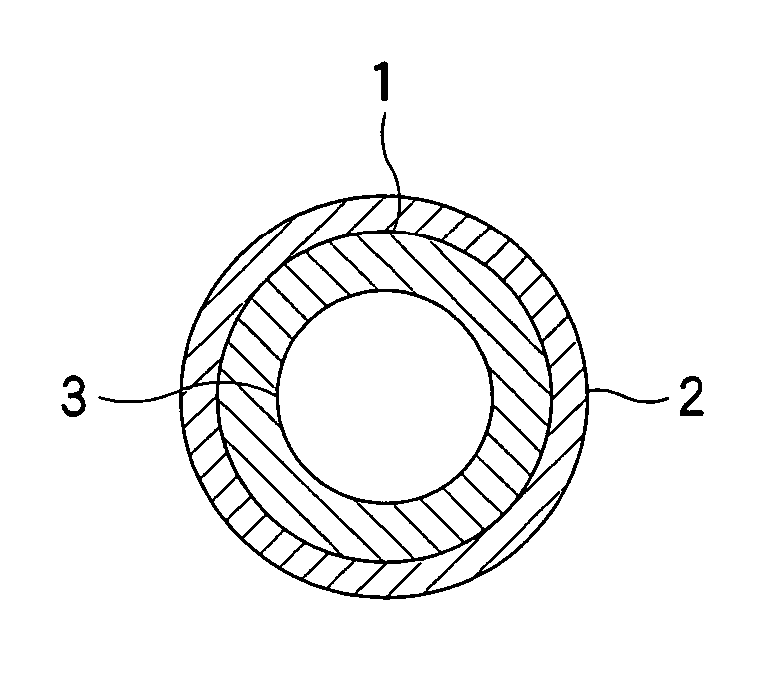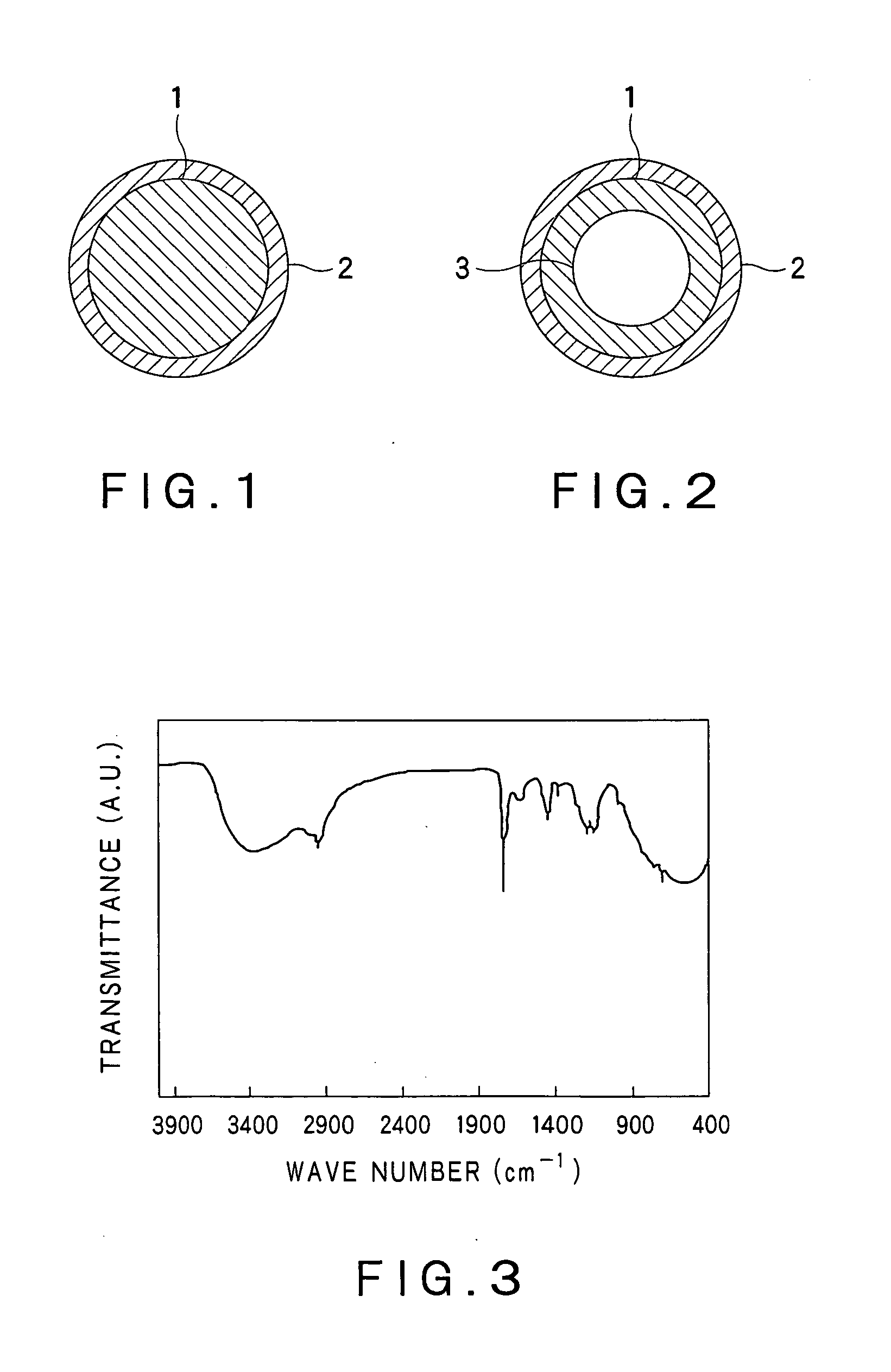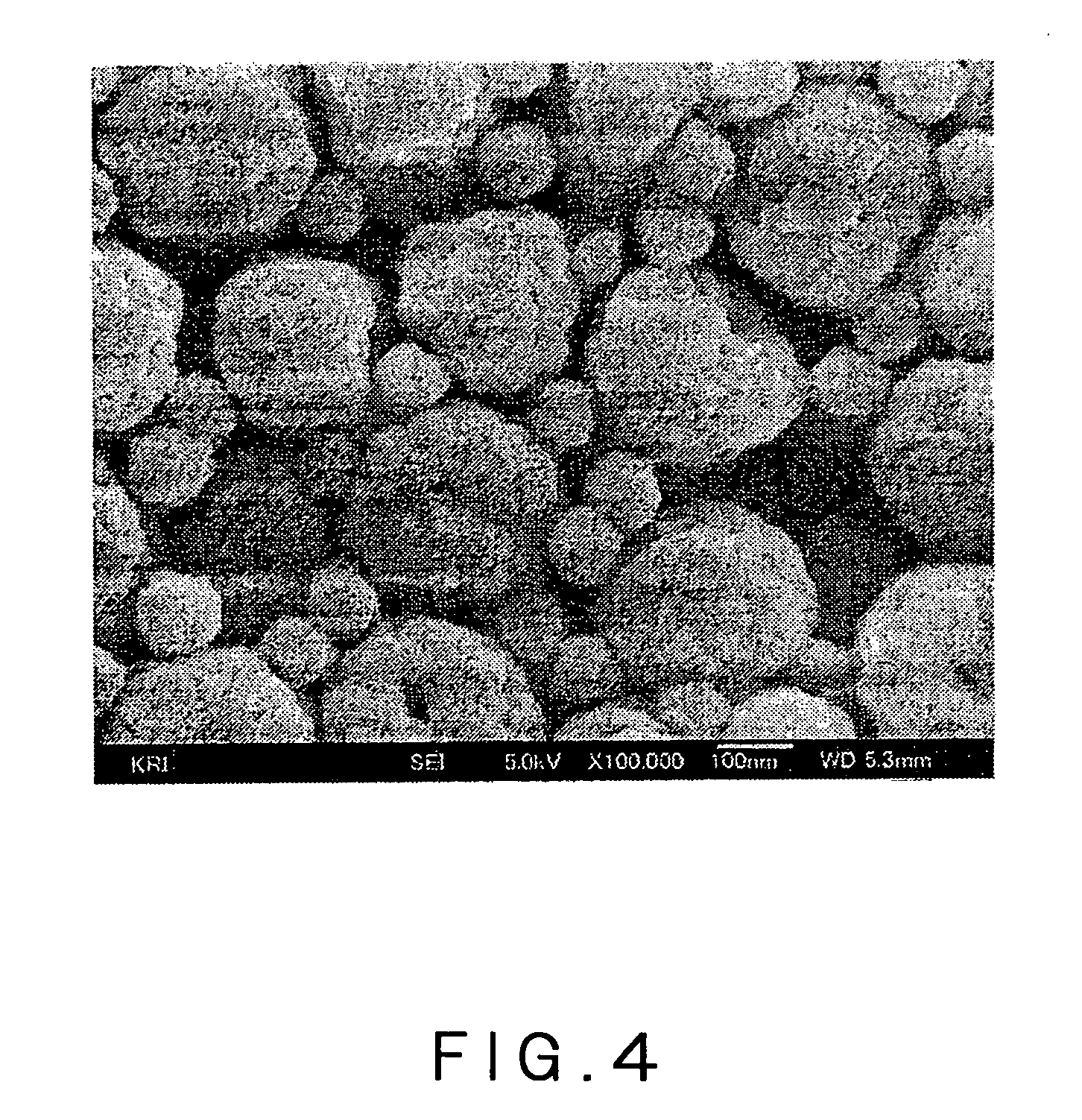White pigment for water-based ink and process for producing the same
a technology of water-based ink and white pigment, which is applied in the direction of natural mineral layered products, cellulosic plastic layered products, transportation and packaging, etc., can solve the problems of unsatisfactory covering power of ink, lack of ink storage stability, and deterioration of print quality, so as to achieve excellent stability of pigment against settling, the effect of excellent reliability against clogging and high level of covering power
- Summary
- Abstract
- Description
- Claims
- Application Information
AI Technical Summary
Benefits of technology
Problems solved by technology
Method used
Image
Examples
example 1
(1) Preparation of White Pigment for Water-based Ink
[0074] n-Hexane (100 ml), 20 g of titanium tetraisopropoxide, and a stirrer were added to a 300-ml vessel at room temperature, and the vessel containing the contents was placed in a methanol bath of about −80° C. and was cooled for about 2 min.
[0075] Subsequently, an aqueous emulsion having 20.3% (a concentration on a solid basis) of core particles having a diameter of 0.3 μm (styrene-acryl copolymer, SX866B: manufactured by JSR Corporation) was added to a 1% aqueous NaOH solution, and the mixture was stirred at room temperature for 40 min. This liquid was added dropwise to the above n-hexane solution through a pippette. The dropwise addition was carried out while stirring the n-hexane solution with a stirrer. When the dropwise addition of the aqueous emulsion was continued, white solid matter was precipitated and, consequently, the stirrer became unstirrable.
[0076] When the dropwise addition of 70 ml of the aqueous emulsion wa...
example 2
[0081] An aqueous emulsion 2 containing titanium oxide-covered core particles was prepared in the same manner as in Example 1, except that 100 ml of an aqueous emulsion was placed in a 300-ml flask equipped with a cooling tube and was refluxed with vigorous stirring for 24 hr.
[0082] The measurement of an infrared spectroscopic spectrum and observation under an electron microscope were carried out for the aqueous emulsion 2 thus obtained in the same manner as in Example 1. As a result, it could be confirmed that a layer of titanium oxide was formed on the surface of core particles. Further, in the same manner as in Example 1, the particle diameter of the white pigment thus obtained was measured from the electron photomicrograph and was found to be 0.45 μm. Further, a Raman spectrum was measured in the same manner as in Example 1. As a result, it was found that peaks characteristic of anatase crystal structure were observed around 145 cm−1, 396 cm−1, 517 cm−1, and 637 cm−1.
[0083] Fu...
example 3
[0084] An aqueous emulsion 3 containing titanium oxide-covered core particles was prepared in the same manner as in Example 1, except that 100 ml of an aqueous emulsion together with a stirrer was placed in a 300-ml pressure-proof hermetic vessel and was treated at 120° C. for 24 hr.
[0085] The measurement of an infrared spectroscopic spectrum and observation under an electron microscope were carried out for the aqueous emulsion 3 thus obtained in the same manner as in Example 1. As a result, it could be confirmed that a layer of titanium oxide was formed on the surface of core particles. Further, in the same manner as in Example 1, the particle diameter of the white pigment thus obtained was measured from the electron photomicrograph and was found to be 0.42 μm. Further, a Raman spectrum was measured in the same manner as in Example 1. As a result, it was found that peaks characteristic of anatase crystal structure were observed around 145 cm−1, 396 cm−1, 517 cm−1, and 637 cm−1.
[0...
PUM
| Property | Measurement | Unit |
|---|---|---|
| particle diameter | aaaaa | aaaaa |
| particle diameter | aaaaa | aaaaa |
| diameter | aaaaa | aaaaa |
Abstract
Description
Claims
Application Information
 Login to View More
Login to View More - R&D
- Intellectual Property
- Life Sciences
- Materials
- Tech Scout
- Unparalleled Data Quality
- Higher Quality Content
- 60% Fewer Hallucinations
Browse by: Latest US Patents, China's latest patents, Technical Efficacy Thesaurus, Application Domain, Technology Topic, Popular Technical Reports.
© 2025 PatSnap. All rights reserved.Legal|Privacy policy|Modern Slavery Act Transparency Statement|Sitemap|About US| Contact US: help@patsnap.com



